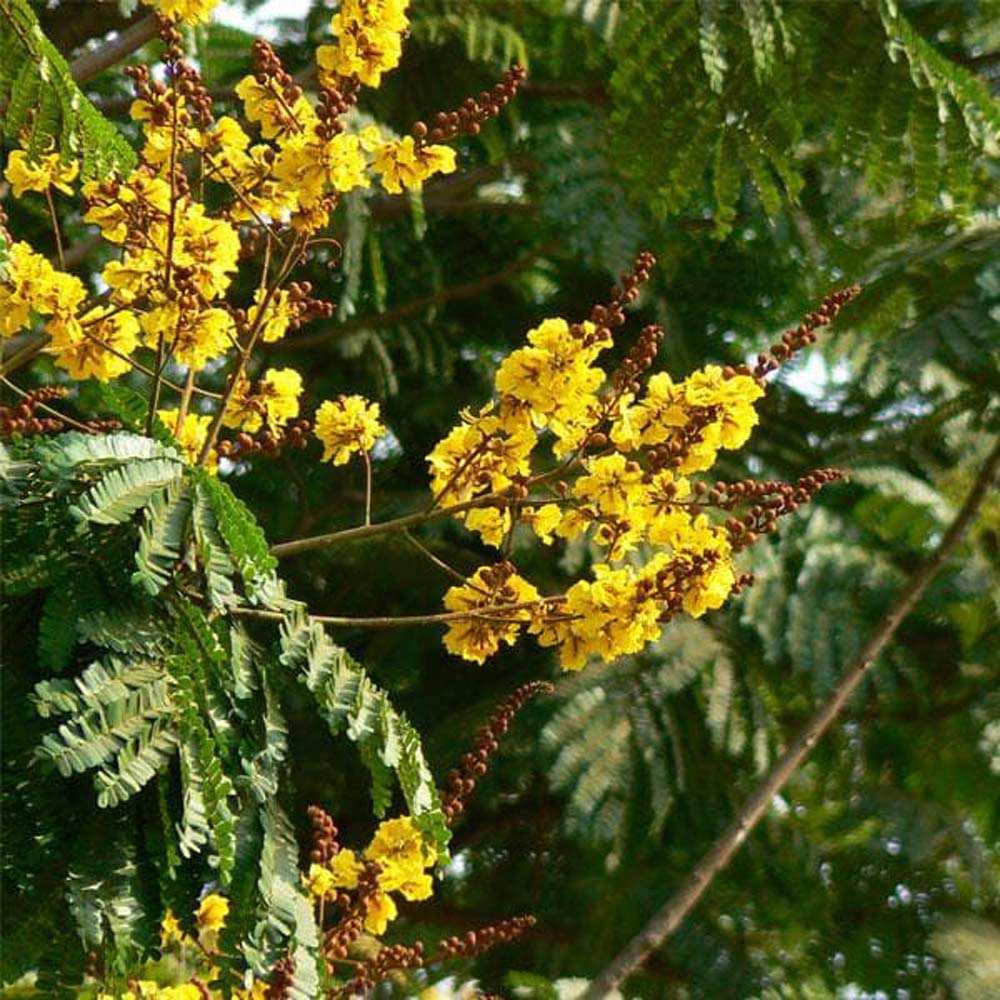Peltophorum Africanum
Peltophorum Africanum is a small to medium-size semi-deciduous to deciduous tree of about 15Ft to 30 Ft tall, with a spreading crown, frequently branched from near the ground or 2- to 3-stemmed from ground level; bark smooth and grey on the young branches; twigs covered in reddish-brown hairs, but brown to grey and rough with lengthwise grooves on older branches and stems. Leaves alternate, compound, bipinnate, with 4-7 pairs of pinnae, each bearing up to 23 pairs of feathery leaflets; leaflets oblong, variable in size, dull green top side, pale green underside; apex rounded with a fine, hairlike tip; base asymmetric; margin entire; petiole and rachis covered with dense, rusty brown, velvety hairs; stipule distinctive in appearance, like small compound leaves, but falling early; when not in flower P. africanum can easily be confused with an acacia tree, except that it is completely without thorns. Flowers 7″ long; all floral parts in 5s; flower stalks and the backs of sepals covered with brown, velvety hairs; petals about .5″ in diameter, bright yellow and crinkled. The flowers are a source of pollen for bees. Fruit a flat pod, elliptic, tapering to apex and base, up to 5″ x 1″ with a winglike margin, very thinly woody, almost leathery, greyish-brown or yellow-tan and ripening to a dark brown, hanging in dense clusters.





